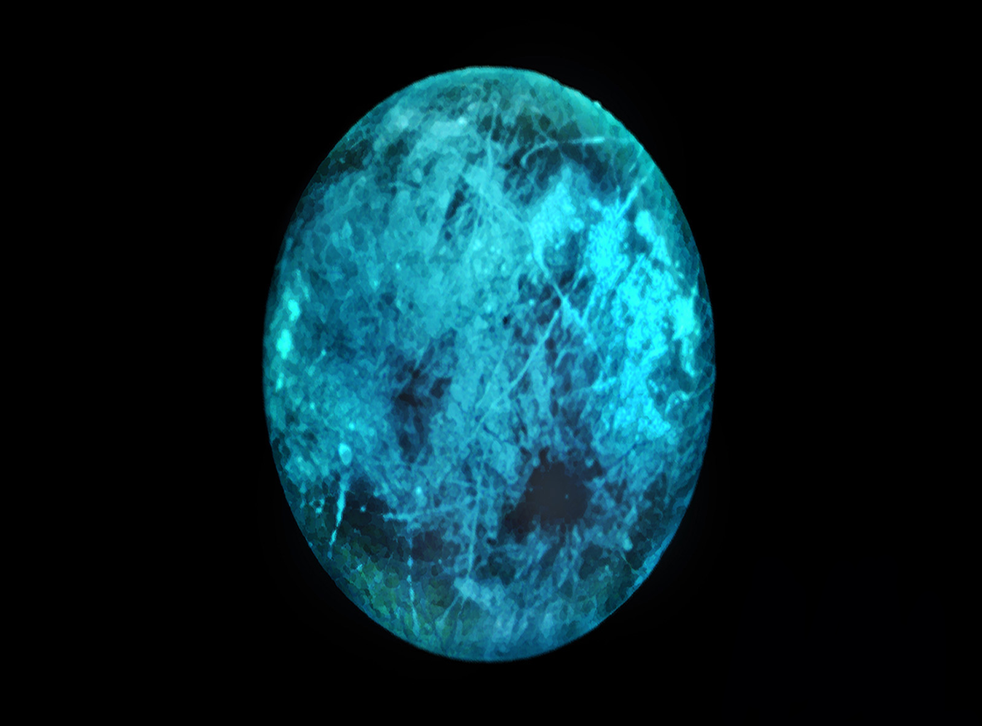
NASA study has found that Jupiter’s moon Europa can glow in the dark due to radiation.
Scientists are almost certain that hidden beneath the icy surface of Europa is a salty-water ocean thought to contain twice as much water as Earth’s oceans combined. Europa is Jupiter’s fourth largest moon and as it passes through the strong magnetic field of its host planet, its surface is bombarded by high-energy protons, electrons, and ions. As these particles interact with the moon’s salt- and ice-rich crust, they could trigger complex physical and chemical processes that have important consequences for Europa’s chemical composition.

Europa may be the most promising place in our solar system to find present-day environments suitable for some form of life beyond Earth.
Slightly smaller than Earth’s Moon, Europa’s water-ice surface is crisscrossed by long, linear fractures, cracks, ridges, and bands. The moon’s ice shell is probably 10 to 15 miles (15 to 25 kilometers) thick, beneath which the ocean is estimated to be 40 to 100 miles (60 to 150 kilometers) deep. Like Earth, Europa is thought to also contain a rocky mantle and iron core.
Researcher’s came to the conclusion that the reason behind it glowing in the dark is the radiation it receives from the largest planet of our solar system. The Research team also believes that its surface may contain common salt found on our planet as well which helps it glow in the dark.
NASA will conduct further research using the Europa Clipper mission, which will conduct flyby near the orbit of the moon. This will help scientists understand whether their hypothesis was correct or not.
WoW 😊
LikeLiked by 1 person
😊✨
LikeLiked by 2 people
That’s so interesting.. and they found salt? (:
LikeLiked by 1 person
Thanks for reading…Europa is a glowing moon it contains salty water ocean. Scientist found the reason for glowing.
LikeLiked by 2 people
So interesting, there is always something new to learn about the universe
LikeLiked by 2 people
Yeah dear.. we have lot many new things to learn about universe… Some are still hidden secret…😊
LikeLiked by 3 people
⚡🌹⚡
LikeLiked by 2 people
😊✨✨
LikeLike
Interesting news. We are pushing the limits of what we see. Like the good news.
LikeLiked by 1 person
Thanks for reading and keep supporting and stay safe…😊✨
LikeLike
Universe is so laden with immense hidden secrets 😊
LikeLiked by 1 person
Exactly.. Universe is so wider than we think..😊
LikeLiked by 1 person
It’s informative and those pictures are vibrant. Thanks.
LikeLiked by 1 person
Thanks for your compliment and keep supporting… Stay safe 😊✨
LikeLike
You too
LikeLiked by 1 person
This is fascinating 👌👌
LikeLiked by 1 person
Thank you so much for reading..😊
LikeLiked by 1 person
Hey there! Would you mind if I share your blog with my myspace group? There’s a lot of folks that I think would really enjoy your content. Please let me know. Many thanks
LikeLiked by 1 person
Yeah sure u can share, I am glad you liked my blog. Thanks for reading and keep supporting.😊✨
LikeLiked by 1 person
Thank you for this information!
LikeLiked by 1 person
Thanks for reading!..😊✨
LikeLiked by 1 person